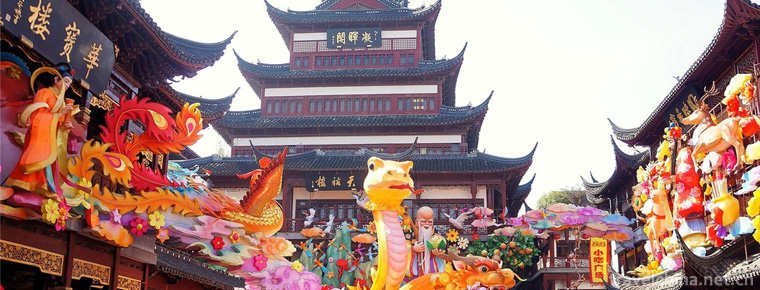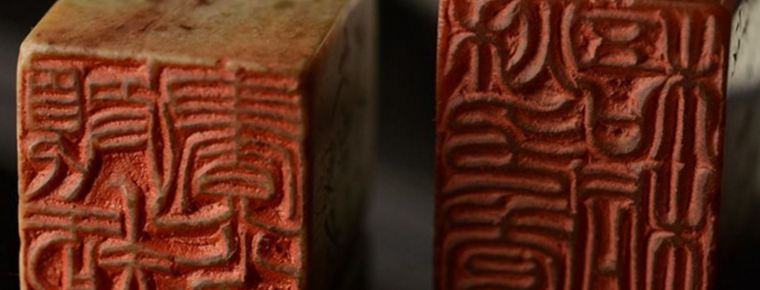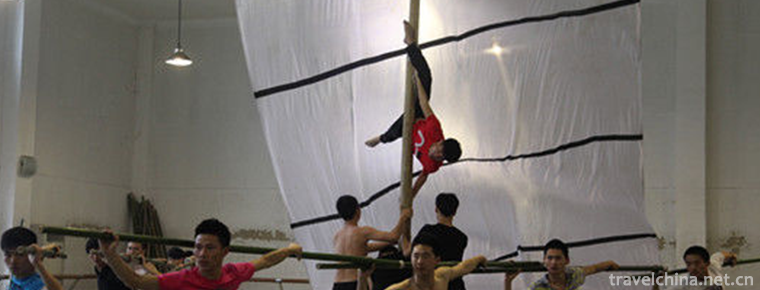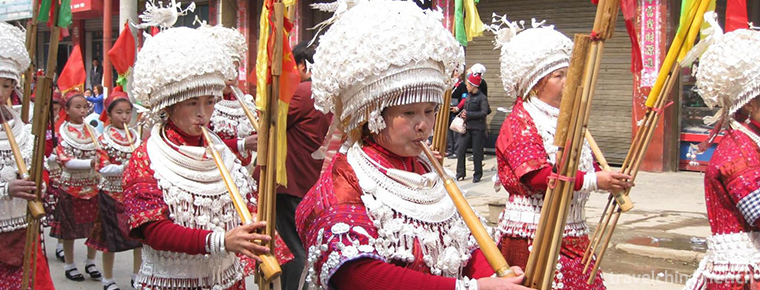Manas
Manas
Manas, the traditional folk literature of Kirgiz Autonomous Prefecture in Kizlesu, Xinjiang, is one of the national intangible cultural heritage.
Manas describes the hero Manas and his seven generations of descendants who led the Kirgiz people to fight against foreign aggressors and various evil forces. Manas embodies the indomitable national character of Kirgiz and the national spirit of unity and progress.
On May 20, 2006, Manas was approved by the State Council of the People's Republic of China to be included in the first batch of national intangible cultural heritage catalogues, the heritage number: I-25. On September 28, 2009, Manas was selected as UNESCO's "Representative Works of Human Intangible Cultural Heritage".
historical origin
Manas was born in the 9th to 10th centuries A.D. and became more full and legendary through the elaboration and refinement of Kirgiz singers of different generations.
Manas began to circulate in the 16th century and has been handed down orally for thousands of years. Folk singers play an important role in the creation and inheritance of epics.
The census of Manas began in the 1960s. Many singers singing Manas were found in the census, and various variants of Manas were recorded.
Cultural characteristics
primary coverage
Manas is a famous hero and leader in Kirgiz legend. He embodies strength, courage and wisdom. Epic Manas is different in broad sense and narrow sense. Generalized Manas includes the stories of Manas and his seven generations'descendants. Therefore, it is divided into eight parts. Each part is named after the protagonists. They are Manas, Saimatai, Saima, Saima, Aselebacha and Buick Bacha, Somubilek and Chigetai. Each chapter is an independent chapter, narrating the story of a generation of heroes. Each part is connected with each other to form a complete system. In a narrow sense, Manas refers specifically to the first one. Among the eight epics, it is the longest and most artistically skilled. It describes Manas'extraordinary life, which consists of "magical birth", "outstanding war achievements in childhood", "British-Uygur marriage", "leader of tribal alliance", "great expedition" and "heroic sacrifice". Manas describes the heroic deeds of Manas and his seven generations of descendants who went forward and led the Kirgiz people to fight against foreign aggressors and various evil forces and fight for freedom and happiness.
artistic characteristics
Manas, as a general term of Manas and his various variants, is spread orally. It is a rhyme epic sung by folk artists. It has dual attributes of folk literature and folk music.
Manas's eight poems are composed independently and cohesively. The whole poem is complete in structure, winding in story and rich in content. Especially the first one is the most brilliant and the length is the longest, accounting for one quarter of the whole poem.
Manas has distinctive national characteristics in language. It often symbolizes heroes with mountains, lakes, rapids, gales, eagles and tigers. It is a metrical poem, which covers almost all Kirgiz folk verse genres, such as myths, legends, folk songs and proverbs.
Manas not only has the historical authenticity, but also has the contradiction of drama. He also combines the characteristics of folk poetry, such as speaking, reciting and singing, to make the historical context clear and credible, dramatic conflicts sharp and complex, fluent language, harmonious rhythm, and easy to sing.
Manas has distinct characters and tortuous plots. In the All-Poet Characters Gallery, Manas is a heroic image full of primitive passion and fresh vitality, with special artistic charm. Poetry and prose have beautiful language, vivid metaphor, and concise proverbs everywhere. They have strong national characteristics.
Manas uses Rhymes from beginning to end, with 7-8 syllables in each line, which is very complete. In terms of rhyme, Manas has rich rhyme forms, such as alliteration, waist rhyme, foot rhyme and rhythm rhyme. Among them, alliteration has more verse segments. Because of the complete syllable and the foot rhyme of each paragraph, this epic has a strong sense of rhythm and is full of music. It is easy for singers to sing and gives people the enjoyment of harmony and beauty. Singers sing Manas with a variety of tunes, some high and bold, like a galloping war song; some calm and slow, like a flowing stream of lyrics. These tunes preserve the characteristics of ancient Kirgiz folk music and are important raw materials for the study of Kirgiz music.
Inheritance mode
In the process of oral transmission for thousands of years, the Kirgiz people have integrated their knowledge, understanding of the surrounding things and their spiritual and cultural heritage into Manas from generation to generation. Manas has a vast space and magnificent scale. However, before the founding of New China, there was no written record. It only relied on the oral biography of "Manas Qi" (people's appellation of folk singers singing Manas). From generation to generation.
Manas researchers believe that the inheritance of the epic Manas has two traditions: imparting and dream teaching. Most of the researchers tend to impart and say that Manas Qi is inherited from the previous singers through two ways: family and teacher. Jusuf Mayi was born in a typical folk literature and art home. His father was a herdsman and loved the epic Manas. His mother and sister were local folk singers. His brother Balbai was a collector of Kirgiz folk literature. His greatest achievement was Jusuf, a master of Ahoqi County epic singing. The Manas singing by Ahong and Ebra were recorded and artistically processed to make it a complete eight Manas albums. Brother Baleby gave this book to his younger brother Jusuf, 26 years younger than him. Ma Ma Yi. Gusev. Mamayi began to learn to sing Manas under her brother's instruction at the age of 8. It took only 8 years. By the age of 16, Mamayi had been able to memorize and sing more than 200,000 lines of his brother's eight epics. However, Manasics tend to insist that they have dream-taught experiences. Gusev. Mayi's dream teaching experience is representative. First dream teaching experience: when I was a child, I slept with several herdsmen in the felt room. I dreamed of a white horse rider. I taught him to sing Manas. When I woke up, I could sing. Second Dream Teaching Experience: When he was 8 years old, he dreamed of Manas, Bakay, Alemanbert and others. These heroes told him not to sing Manas until he was 40 years old, and he would surely become a big Manas after 40 years old. Third Dream Teaching Experience: One morning when I was 13 years old, I fell asleep beside my parents and dreamed of five warriors riding horses: Manas, Bakai, Alemante, Chuwak and Ajibayi. After that, he read Manas'manuscript and remembered it. (The Epic of Manas and the Belief in the Soul, Ma Changyi, in Journal of Capital Normal University, No. 6, 1995, PP. 24-31) This view of dream teaching is mysterious. Manas appears in his dream, personally chooses singers, and entrusts the mission of epic singing to Manasi. This shows that Manas is the incarnation of the Kirgiz nation and the Kirgiz nationality. The soul of a nation is a God in the hearts of the people of the Kirgiz nationality. It is a national spirit and embodies the national cohesion. This dream-teaching culture reflects the national spirit of the Kirgiz people and the expectation that the cohesion of the Kirgiz people will be passed on from generation to generation.
Singing tradition
Kirgiz is a nomadic people who lived in the Turks River Basin in history. They are male, female, old and young, regardless of spring, summer, autumn and winter, after work, they always gather together to sing the national epic - Manas.
Singing way
Manas is a great literary work. It has been singing in the folk for a long time. In Kirgiz, the folk singer who sings Manas is called "Manas Qi". Singer Manas Qi is invited to sing Manas poems and essays in festivals and festivals. Singing without instrumental accompaniment, the tune is high or low, the melody is relaxed and fast. Some "Manastic" can sing from night to dawn, singing competitions, even for several days and nights.
Manas takes the form of rhyme. Manas sings from beginning to end without any narrative part. The melody is beautiful, rhythmic and harmonious. When singing to the climax or encountering a long poem paragraph, it is often sung in one breath, such as pearls falling on a jade plate, which is the full expression of Manas's pure singing skills and deep emotional color.
Inheritance and protection
Inheritance value
Manas has created a glorious image of Manas, which is regarded as the national soul of Kirgiz because of the people's yearning for a better life and their indomitable fighting spirit.
Manas is regarded as the national soul of Kirgiz and embodies the spiritual strength of Kirgiz. It draws nourishment from the ancient Kirgiz epic and the rich Kirgiz folk literature. It contains the ancient myths, legends, folk songs, folk narrative poems and folk proverbs of Kirgiz. It is an encyclopedia of Kirgiz folk literature and has the value of literature, history, language, folk customs and other disciplines.
Inheritance status
With the acceleration of the modernization process, the inheritance of Manas is facing a crisis. Some important epic poets have died one after another. The famous singers who are still alive are too old and the situation of epic inheritance is grim. Therefore, it is urgent to rescue and protect Manas.
Inheriting characters
Jusuf Mayi, male, Kirgiz, born in 1918 and died in 2014, is a native of Kirgiz Autonomous Prefecture in Kirgiz, Xinjiang. He is a folk artist with profound knowledge and strong improvisation ability. His eight Manas albums were recorded and taught by his brother. He participated in the collation and publication of 18 volumes of the epic Manas.
Shaltahong Kader, male, Kirgiz, born in 1941, is a native of Kirgiz Autonomous Prefecture in Kirgiz, Xinjiang. At the age of 9, he began to learn to sing the epic Manas. He often participated in festive banquets or sacrificial ceremonies held by the people and sang Manas at parties. He has accumulated rich folk literature materials in his long-term singing practice, and his singing is full of unique folk literature style.
protective measures
In the early 1950s, Xinjiang governments at all levels began to collect and record Manas in a planned way. In the 1960s, Manas compiled about 20,000 lines of two books and translated them into Chinese and Uygur for publication.
Since the 1960s, researchers have recorded, collated and published eight Kirgiz texts of Manas (30,000 lines, 18 volumes) which are famous for inheriting the singing of Habitat Suffumay Mayi. They have been translated into English, Russian, Chinese, Tu, Japan and Kazakhstan.
social influence
international repercussions
Manas, together with the Tibetan epic Gesar and the Mongolian epic Jianger, is known as the three famous heroic epics in China. UNESCO has designated 1995 as the International Year of Manas.
On September 28, 2009, he was selected as UNESCO's "List of Representative Works of Human Intangible Cultural Heritage", thus stepping on the highest stage of world literature.
Important activities
In November 1978, Jusuf Mayi was invited to Beijing to sing Manas again.
In 1995, at the Manas International Symposium held in the Kyrgyz Republic, Kyrgyzstan's Deputy Prime Minister presented a gold medal for Jusuf Mayi on behalf of the Kyrgyz State.
From 1984 to 1995, China completed the publication of Jusuf Mayi's epic Manas. This is the first complete printed edition in the world so far. It has completely realized the transformation from oral literature to print publishing.


-
Town God TempleChenghuang Temple
Located in Shanghai's Huangpu District Fang Bang Road.
Views: 153 Time 2018-10-12 -
Longxing Temple
Longxing Temple, alias Dafo Temple, is located in Dongmenli Street, Zhengding County, Shijiazhuang City, Hebei Province. It was originally Longteng Garden of Yanmu Rongxi after the Eastern Jin Dynasty.
Views: 159 Time 2019-02-06 -
Overhanging Great Wall
The hanging wall of the Great Wall is located on the northern slope of the Heishan Mountains on the north side of Shiguan Gorge, 8 kilometers north of Jiayuguan City.
Views: 150 Time 2019-02-26 -
Jinshi seal carving
Epigraphic seal carving is an ancient Chinese traditional arts and crafts, which belongs to an important part of Chinese stone culture. As the birthplace of inscription, Xiling Seal Press has been lis.
Views: 298 Time 2019-05-07 -
Lishui Shipmans Chant
Lishui Shipman's Chant is a unique work chant transformed from local minor. It is a kind of traditional folk music with strong rhythm, which reflects the hard life of the shipmen and the work scene in.
Views: 126 Time 2019-05-13 -
Hulusheng Dance of Yi Nationality
Hulusheng Dance of Yi Nationality, the traditional dance of Wenshan Zhuang and Miao Autonomous Prefecture in Yunnan Province, is one of the national intangible cultural heritage..
Views: 103 Time 2019-07-12 -
Traditional craftsmanship of moon cakes
Guo Dulin Jin-style moon cakes are Shanxi specialty. They are simple in shape, mellow in taste, crisp and refreshing, sweet but not greasy. They are famous for their crispness, delicacy, sweetness, me.
Views: 192 Time 2019-07-16 -
Han Feizi
Han Feizi is a collection of works of famous thinkers and Legalists Han Fei during the Warring States period. Han Feizi was compiled by posterity after Han Fei's death. According to hanshuyiwenzhi &qu.
Views: 91 Time 2019-09-07 -
The social background of Cheongsam
Many scholars and media at that time believed that it was an important reason that women imitated men to wear long gowns in order to seek independence of mind and emancipation of women's rights in the early Republic of China..
Views: 315 Time 2020-12-11 -
Population of Deyang
By the end of 2018, the total number of households in Deyang was 1 million 575 thousand, and the total registered residence population was 3 million 870 thousand. Among them, there were 1 million 242 thousand urban residents and 2 million 629 thousand rural population.
Views: 318 Time 2020-12-14 -
Guangan bus
In the main urban area of Guang'an City, there are not only urban buses directly to Deng Xiaoping's hometown scenic spot, Shenlong mountain Ba Ren stone city, Siyuan square, but also one-day tour through bus to Huaying Mountain, baoz.
Views: 303 Time 2020-12-19









